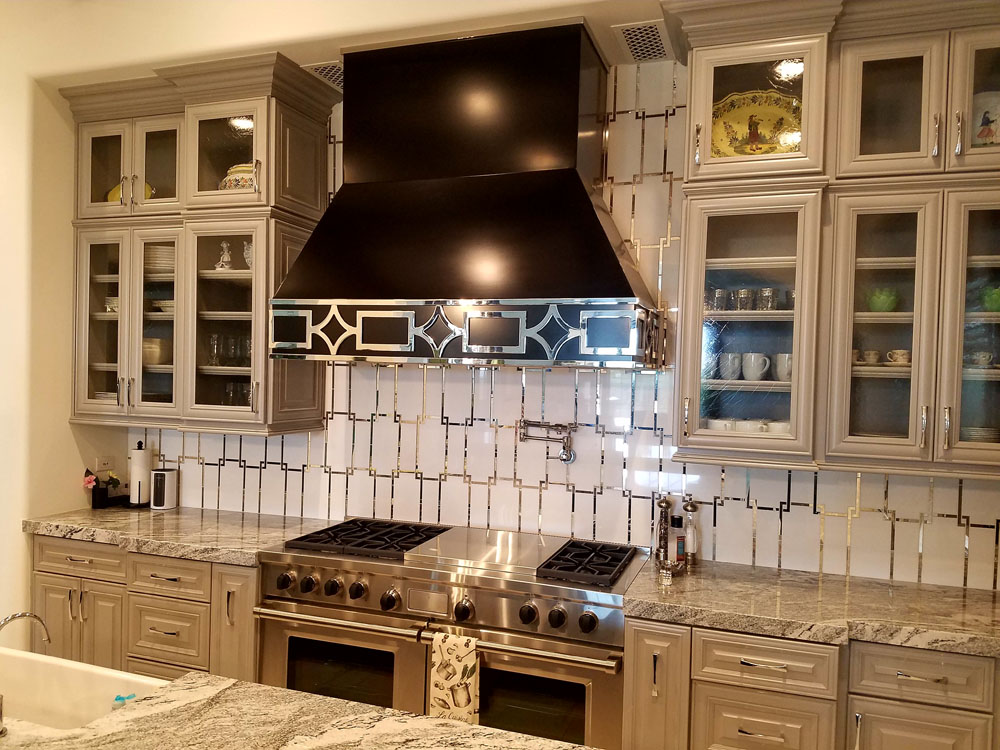You may be wondering if you need a kitchen range hood? is it essential? Read on to learn more.
A range hood is a kitchen appliance that helps to remove cooking fumes, smoke, and grease from the air. It typically consists of a fan, a filter, and a light. The fan draws in the air from the cooking area, and the filter removes the grease and other particles. The clean air is then either vented to the outside or recirculated back into the kitchen.
There are two main types of range hoods: ducted and ductless. Ducted range hoods have a duct that carries the air from the fan to the outside of the home. This is the most effective type of range hood, as it removes all of the cooking fumes and smoke from the air. Ductless range hoods, on the other hand, recirculate the air back into the kitchen after it has been filtered. This type of range hood is not as effective as ducted range hoods, but it is less expensive and easier to install.
Here is how a range hood works in more detail:
- The fan motor turns on, creating suction.
- The suction draws in the air from the cooking area.
- The air passes through the filter, which removes the grease and other particles.
- The clean air is then either vented to the outside or recirculated back into the kitchen.
The amount of air that a range hood can move is measured in cubic feet per minute (CFM). The CFM rating of a range hood should be matched to the size of the kitchen and the type of cooking that will be done. For example, a larger kitchen or a kitchen with a lot of stovetop cooking will require a range hood with a higher CFM rating.
Range hoods are an important part of any kitchen, as they help to keep the air clean and free of cooking fumes. They can also help to prevent the buildup of grease and other particles on the walls and ceiling of the kitchen.
Here are some additional tips for using a range hood:
- Turn on the range hood before you start cooking.
- Turn on the range hood on the highest setting when you are cooking something that produces a lot of smoke or fumes.
- Turn off the range hood after you are finished cooking.
- Clean the filter on a regular basis.
Do Gas Ranges Need To Be Vented?
Yes, gas ranges should be vented to ensure the safe and proper operation of the appliance. Ventilation for gas ranges serves several important purposes:
- Removal of Combustion Byproducts: Gas ranges produce combustion byproducts, including carbon monoxide (CO) and nitrogen dioxide (NO2), which can be harmful if not properly vented. Ventilation helps remove these potentially dangerous gases from the kitchen.
- Heat and Steam Venting: Gas ranges generate heat and steam when cooking, and proper ventilation helps remove excess heat and moisture from the cooking area, creating a more comfortable kitchen environment.
- Odor and Smoke Removal: Ventilation helps dissipate cooking odors and smoke, preventing them from accumulating in the kitchen and throughout the home.
- Grease and Particulate Filtration: Range hoods often come equipped with grease filters and sometimes charcoal filters to capture grease and cooking particulates, improving indoor air quality.
There are two primary methods for venting a gas range:
- Range Hood with Exhaust Fan: The most common and effective method is to use a range hood equipped with an exhaust fan. Range hoods come in various styles, including wall-mounted, under-cabinet, island, and downdraft hoods. The exhaust fan in the range hood draws in the cooking byproducts and expels them outside the home. Make sure the range hood is appropriately sized for your range and kitchen space to ensure efficient ventilation.
- Overhead Ventilation System: In some kitchens, an overhead ventilation system may be installed above the gas range. These systems typically consist of a canopy or exhaust hood that captures and removes cooking byproducts. The captured air is then ducted to the outside through a vent or chimney.
When installing or using a range hood or ventilation system for a gas range, it’s important to follow local building codes and manufacturer guidelines. Regular maintenance, such as cleaning filters and inspecting ductwork for blockages, is also crucial to maintain efficient and safe ventilation.
Ventilation is essential not only for safety but also for the overall comfort and air quality in the kitchen. Properly venting a gas range helps ensure that your cooking area remains a healthy and pleasant environment.
What Is Carbon Monoxide?
Carbon monoxide (CO) is a colorless, odorless, and tasteless gas that is produced when carbon-containing fuels, such as wood, gasoline, natural gas, and propane, do not burn completely. It is often referred to as the “silent killer” because it can be highly toxic and pose significant health risks when inhaled. Here are some key points about carbon monoxide:
- Toxicity: Carbon monoxide is toxic to humans and animals when inhaled. It interferes with the body’s ability to transport oxygen in the blood, which can lead to oxygen deprivation in vital organs, particularly the brain and heart.
- Sources: Common sources of carbon monoxide in the home include gas stoves, gas furnaces, wood-burning stoves, fireplaces, gas-powered generators, and vehicles running in enclosed spaces (such as a garage). Malfunctioning or poorly maintained heating systems are a frequent source of carbon monoxide leaks.
- Symptoms of Carbon Monoxide Poisoning: Exposure to carbon monoxide can lead to symptoms that include headache, dizziness, weakness, nausea, vomiting, confusion, shortness of breath, and loss of consciousness. Prolonged exposure can be life-threatening.
- Prevention: To prevent carbon monoxide poisoning, it’s essential to ensure that fuel-burning appliances and equipment are correctly installed and maintained. Adequate ventilation, proper venting of exhaust gases, and the use of carbon monoxide detectors in the home are critical for safety.
- Carbon Monoxide Detectors: Carbon monoxide detectors are designed to alert occupants to the presence of carbon monoxide in the air. They emit an alarm when carbon monoxide levels reach a certain threshold, allowing people to evacuate the area and seek fresh air.
- Treatment: If someone is experiencing symptoms of carbon monoxide poisoning or a carbon monoxide alarm sounds, it is crucial to move to an area with fresh air immediately and seek medical attention. Treatment may involve administering oxygen to restore oxygen levels in the blood.
- Legal Requirements: In many regions, there are legal requirements for the installation of carbon monoxide detectors in residential and commercial buildings. Regulations may specify the number and placement of detectors to ensure safety.
- Carbon Monoxide Emissions: Carbon monoxide emissions are a concern from both an indoor and outdoor air quality perspective. Incomplete combustion in vehicles and industrial processes can contribute to elevated levels of carbon monoxide in the atmosphere, leading to air pollution and potential health problems.
It’s important to be aware of the dangers of carbon monoxide and take steps to prevent exposure. Regular maintenance of fuel-burning appliances, proper ventilation, and the use of carbon monoxide detectors are essential safety measures to protect against the hazards of this toxic gas.
Phoenix Valley Ornamental Iron
From gates and stair railings to range hoods and entry doors Victory Metal Works will help you design, fabricate, and install the style of wrought iron or other alloy elements for your commercial or residential property. If you’ve got a home or business in the valley that could use new sturdy entry doors that are stylish and secure, we can help! No matter what metal architectural element you need we can help. Give us a call today to discuss your project 480-584-6220.
SCHEDULE A FREE CONSULTATION TODAY!
Victory Metal Works is Arizona’s leading manufacturer of custom wrought iron Entry Doors, Gates, Railings, Fences, Hardware and much more in Scottsdale, Paradise Valley and the Greater Phoenix area. Our experience in the construction industry allows us to make your dreams become a reality. Call us at 480-584-6220 to get your next project started today!




